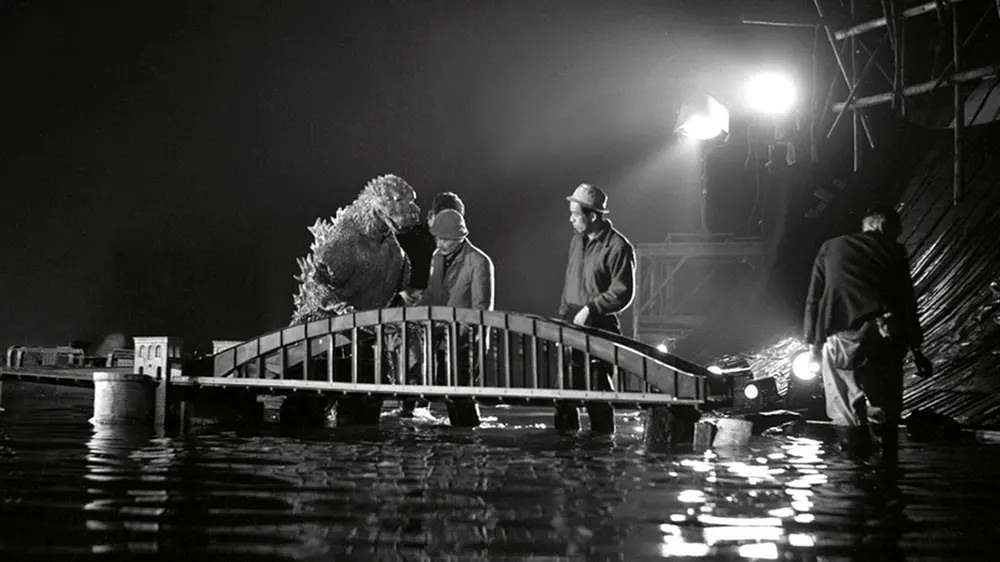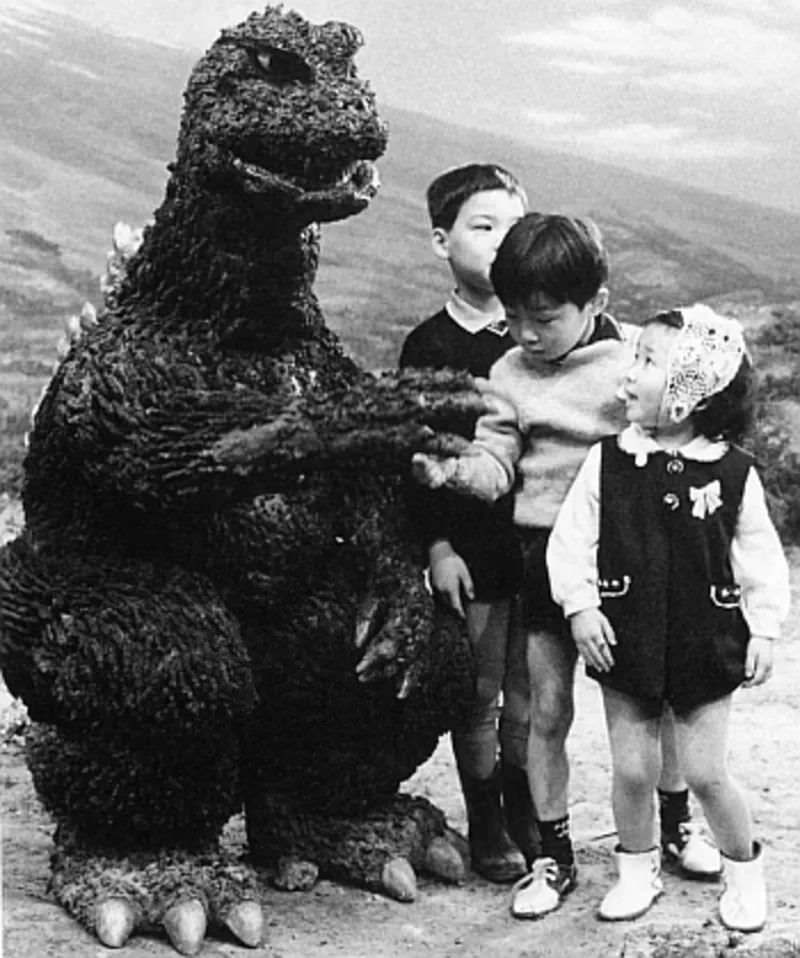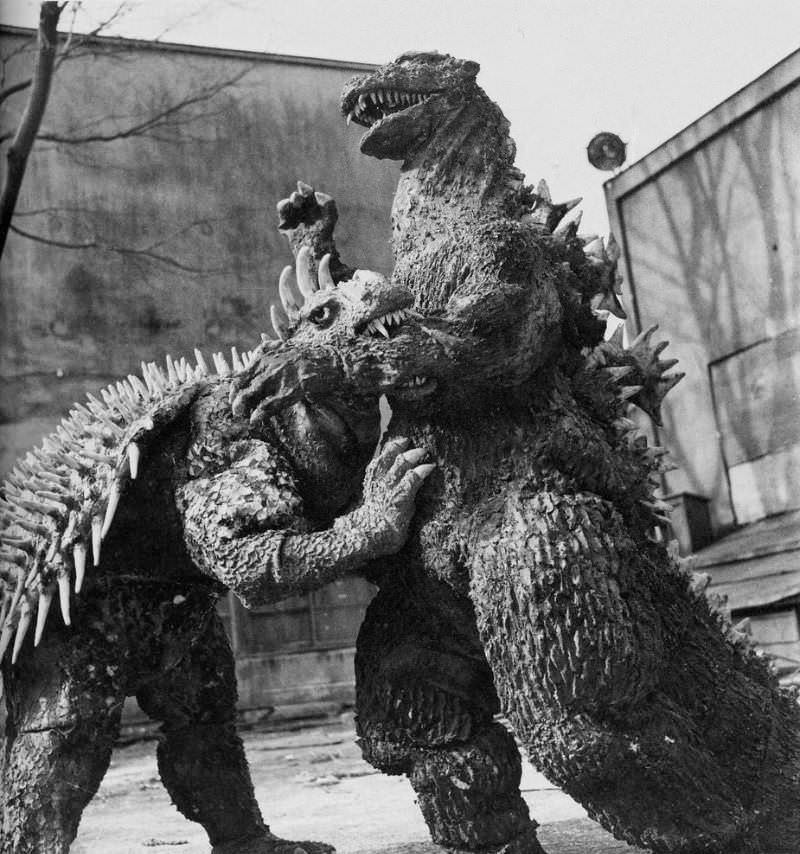In popular culture, Godzilla, or Gojira, is one of the most iconic kaiju (Japanese giant monsters). People worldwide have been captivated by the beast created by the nuclear bomb blast. A beloved international icon of destruction, the rampaging radioactive beast, embodied an entire population’s fears.
Godzilla Movie
The first ever Godzilla movie was released in 1954, Ishirō Honda directed it, and Eiji Tsuburaya handled the special effects. It stars Akira Takarada, Momoko Kōchi, Akihiko Hirata, and Takashi Shimura, with Haruo Nakajima and Katsumi Tezuka as Godzilla. The film depicts Japan’s authorities dealing with a giant monster whose attacks trigger nuclear holocaust fears in the post-war era. Tsuburaya originally proposed a giant octopus before the filmmakers settled on a dinosaur-like creature. Godzilla pioneered suitmation, a form of special effects in which stunt performers wear suits and interact with miniatures. The principal photography lasted 51 days, and the special effects lasted 71 days. It was released in 1954 to mixed reviews but was reappraised in later years. A heavily re-edited “Americanized” version of Godzilla, King of the Monsters, was released in 1956. According to Guinness World Records, it became the longest-running film franchise in history. The character Godzilla has since become an international pop culture icon.
Making of Godzilla
Godzilla was designed by Teizō Toshimitsu and Akira Watanabe under the supervision of Eiji Tsuburaya. Tanaka initially considered having the monster look gorilla or whale-like due to the name “Gojira” (a combination of the Japanese words for “gorilla” and “whale,” kujira), but eventually settled on a dinosaur-like design. The film’s storyboards were drawn by Kazuyoshi Abe, who was hired earlier to design Godzilla but later rejected his designs because Godzilla looked too humanity and mammalian. Godzilla’s design was based on dinosaurs, and Takanabe and Toshimitsu combined elements of Tyrannosaurus, Iguanodon, and Stegosaurus dorsal fins using dinosaur books as references. While Tsuburaya wished to have used stop motion animation, he reluctantly decided on suitmation, based on three clay models Toshimitsu sculpted. The first two were rejected, but the third was approved. Yagi, Yasuei, and Kaimai constructed the Godzilla suit with bamboo sticks and wire, adding metal mesh and cushioning to strengthen its structure and then applying latex coats. Godzilla’s scaly hide was created by coating the suit with molten rubber, carving indentations, and gluing latex strips to the surface. The first version of the suit weighed 100 kilograms (220 pounds). Its mouth sprayed streams of mist to represent Godzilla’s atomic breath for close-ups created by Toshimitsu.
The film presents Godzilla as a symbol of the nuclear holocaust from Japan’s point of view, and he has since become a powerful metaphor for nuclear weapons in the culture. Several months before the film’s production, the Japanese fishing vessel Daigo Fukury Maru (“Lucky Dragon No. 5”) had been hit by radioactive fallout from the U.S. military’s 15 metric ton “Castle Bravo” hydrogen bomb test. A contaminated boat’s catch sparked panic in Japan about the safety of eating fish, and the crew became sick, with one crew member dying from radiation poisoning. Eventually, the Japan Council against Atomic and Hydrogen Bombs (JCAHB) became established due to this event, which led to a significant and enduring anti-nuclear movement.
The film’s opening scene showing Godzilla destroying a Japanese vessel directly references these events. It substantially impacted Japanese viewers, with this recent event still fresh in the public’s mind. The researchers speculated that these viewers viewed Godzilla as a victim and fell in love with its backstory as a reminder of World War II. Academics also claimed that as the United States conducted the atomic bomb tests that woke Godzilla, the film is blaming the United States for the difficulties that Japan experienced after World War II. Additionally, they felt the film could have served as a cultural coping mechanism to help the Japanese move on from the war’s events. The film spawned a multimedia franchise comprising 36 films, video games, books, comics, toys, and other media. Guinness World Records has recognized Godzilla as the longest-running film franchise in history. Godzilla and its special effects director Eiji Tsuburaya are widely credited with setting the template for tokusatsu, an approach to practical special effects filmmaking that soon became essential to Japan’s film industry.
































